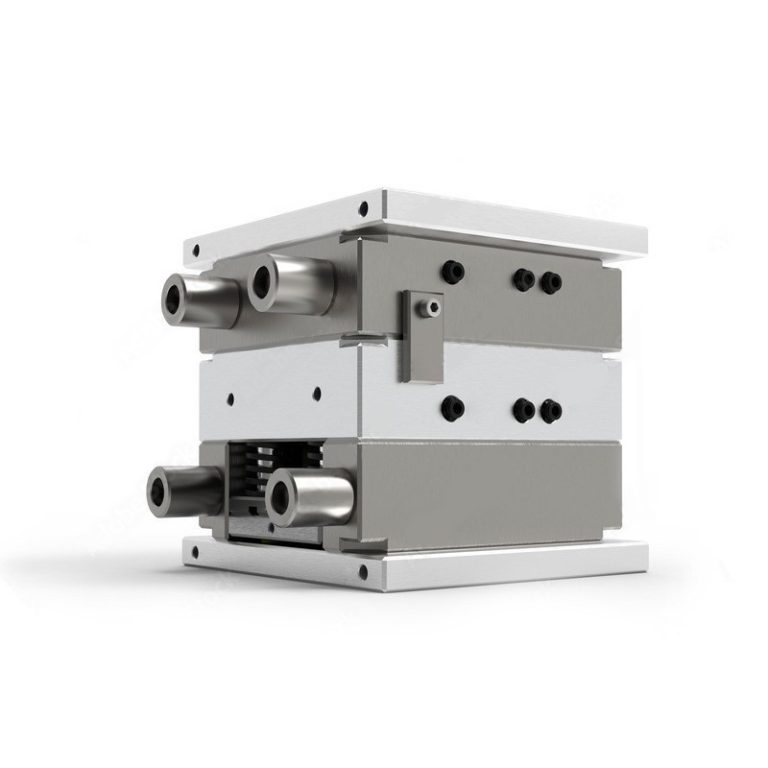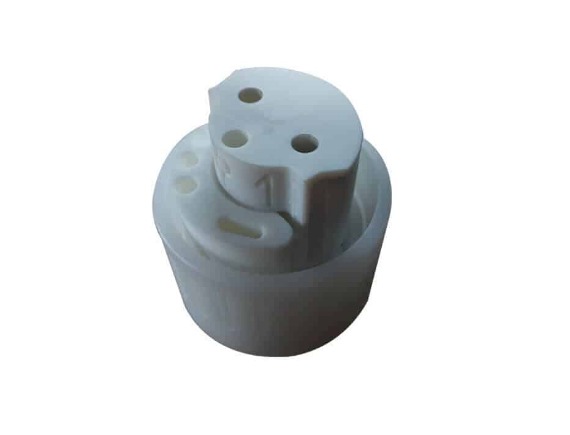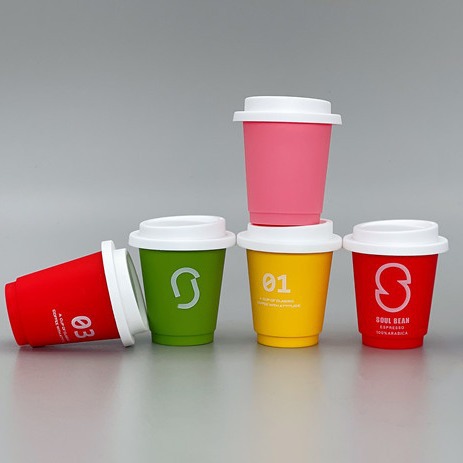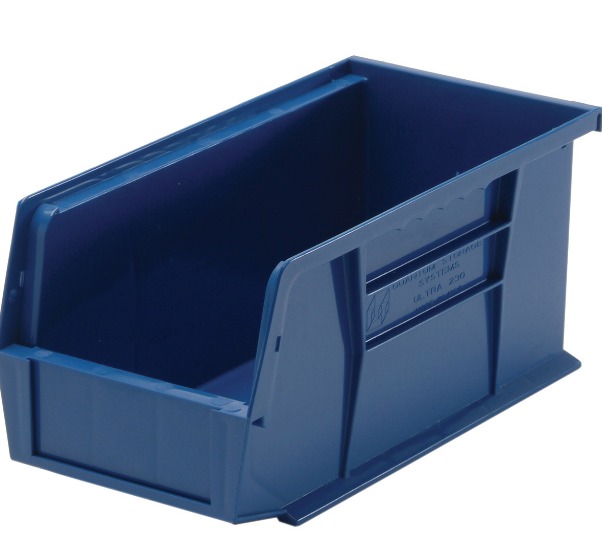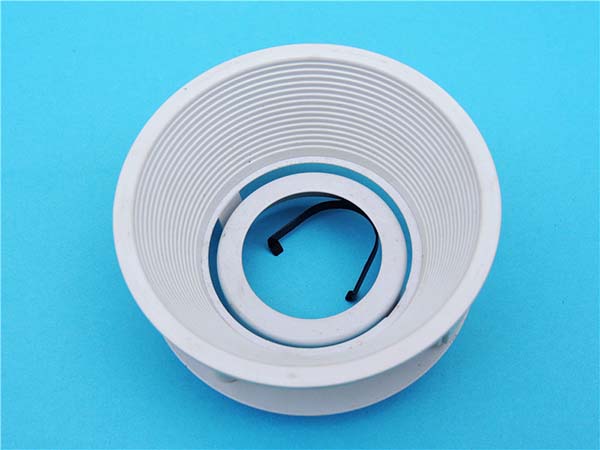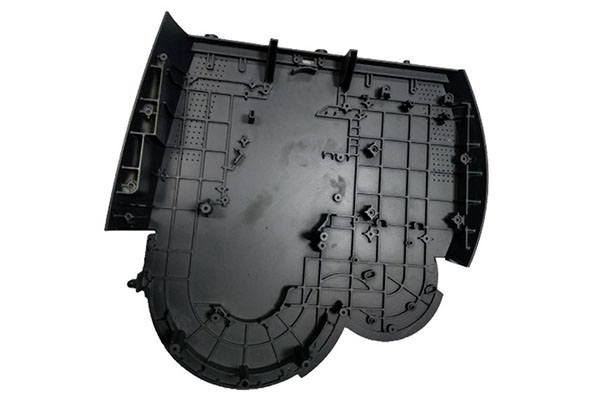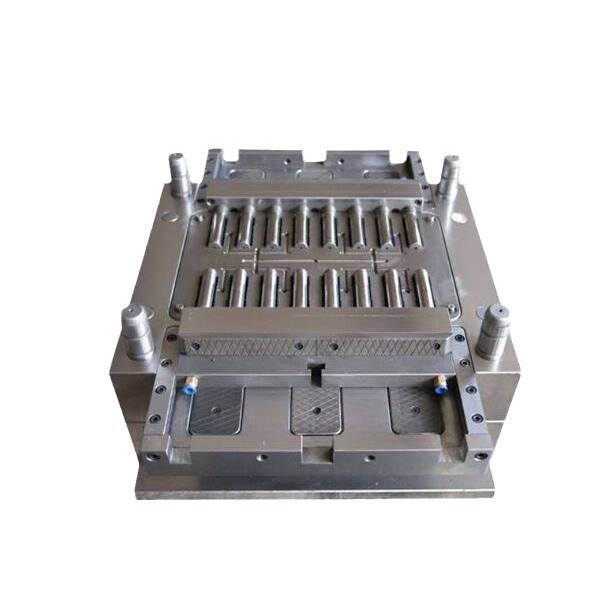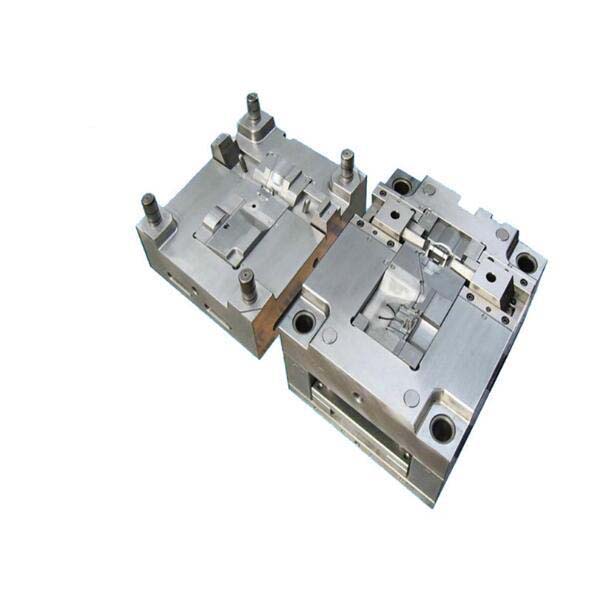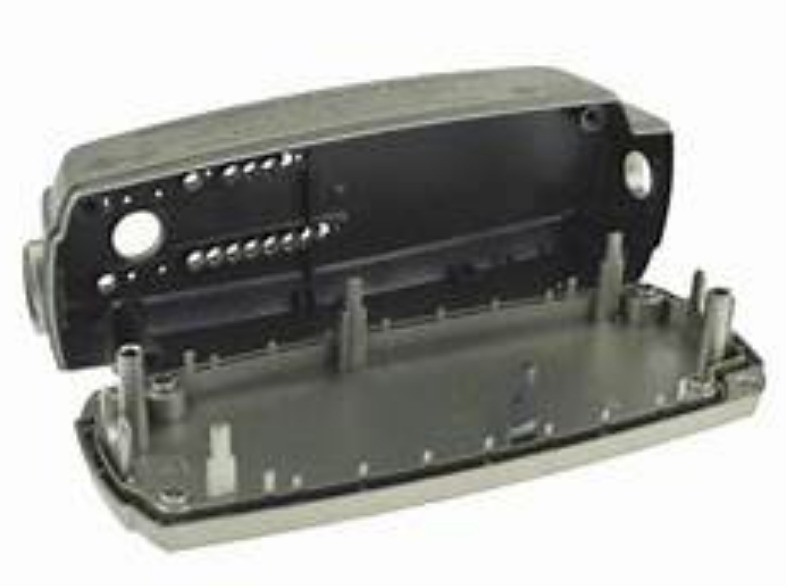Introduction
Injection molding is a widely used manufacturing process that has revolutionized the production of plastic products. It involves injecting molten material, typically plastic, into a mold cavity under high pressure. Once the material cools and solidifies within the mold, it takes on the precise shape of the cavity, resulting in a finished product. This process is renowned for its efficiency, precision, and versatility, making it an ideal choice for producing a vast array of items, from small, intricate components to large, complex parts.
In this article, Yigu Technology will explore in detail how the injection molding craft brings brilliant products to life. We'll look into the key factors, including mold design, material selection, and process parameters, that contribute to the creation of high - quality, accurate, and aesthetically pleasing products. Whether you're a novice curious about the manufacturing world or a professional seeking to optimize your injection molding process, the following insights will provide valuable knowledge.
The Injection Molding Process Unraveled
The injection molding process is a complex yet highly efficient manufacturing method that involves several key steps. Each step is crucial in determining the quality, accuracy, and appearance of the final product. Let's break down the process into its six main stages:
1. Plastic Material Preparation
The process begins with the preparation of the plastic material. Plastic granules or powder are carefully loaded into the hopper of the injection molding machine. The material must be free of contaminants and have consistent quality. For Yigu Technology example, if the plastic contains moisture, it can cause defects in the final product such as bubbles or surface imperfections. Some plastics may require pre - drying to remove any moisture content. Additionally, additives like colorants, fillers, or reinforcing agents may be mixed with the base plastic material at this stage to achieve specific properties.
2. Heating and Melting
Once in the hopper, the plastic material is fed into the heating barrel of the injection molding machine. Inside the barrel, a screw or a plunger is used to move the material forward. As the material progresses through the barrel, it is subjected to heat. The barrel is equipped with heating elements that raise the temperature of the plastic to its melting point. For most common plastics, the melting temperature can range from 150°C to 300°C, depending on the type of plastic. For instance, polyethylene (PE) typically melts at around 110 - 130°C, while polycarbonate (PC) has a higher melting point of around 220 - 230°C. Precise temperature control is essential during this stage. If the temperature is too low, the plastic may not melt completely, leading to inconsistent flow during injection. On the other hand, if the temperature is too high, the plastic can degrade, changing its properties and resulting in a poor - quality product.
3. The Injection Phase
After the plastic has been melted into a uniform, viscous liquid, it's time for the injection phase. A high - pressure system, usually provided by a hydraulic or electric mechanism, forces the molten plastic through the nozzle of the injection molding machine and into the closed mold cavity. The injection pressure can vary widely, typically ranging from 500 to 2000 bar. For small, simple parts, a lower injection pressure may be sufficient, while large or complex parts may require higher pressures to ensure complete filling of the mold. The injection speed also plays a crucial role. A fast injection speed can help in quickly filling the mold, especially for thin - walled parts, but it may also cause air traps or excessive shear stress on the plastic. A slower injection speed, on the other hand, can lead to incomplete filling or longer cycle times. The choice of injection pressure and speed depends on factors such as the shape and size of the part, the type of plastic being used, and the design of the mold.
4. Cooling and Solidification
Once the mold cavity is filled with the molten plastic, the cooling process begins. The mold is designed with a cooling system, usually involving channels through which a coolant (such as water) flows. As the coolant circulates, it absorbs heat from the molten plastic, causing it to cool and solidify. The cooling time is a critical parameter. It depends on factors like the thickness of the part, the type of plastic, and the temperature difference between the molten plastic and the coolant. For Yigu Technology example, a thin - walled plastic cup may cool and solidify in a matter of seconds, while a thick - walled automotive component may require several minutes. During cooling, the plastic shrinks as it solidifies. The amount of shrinkage varies depending on the plastic material. Crystalline plastics, such as polyethylene and polypropylene, generally have a higher shrinkage rate compared to amorphous plastics like polystyrene and ABS. If the cooling is not uniform, it can lead to warping or internal stresses in the product, affecting its dimensional accuracy and mechanical properties.
5. Opening the Mold and Retrieving the Product
After the plastic has cooled and solidified sufficiently, the mold is opened. This is typically done by a mechanical system that separates the two halves of the mold. Once the mold is open, the finished product, along with any remaining runner systems (the channels through which the plastic flowed into the mold), is ejected from the mold cavity. Ejection is usually achieved using ejector pins, which push the product out of the mold. Care must be taken during this process to ensure that the product is not damaged. If the ejection force is too high or the ejector pins are not properly located, it can cause marks on the product or even break it. In some cases, especially for complex or delicate parts, additional mechanisms like air ejection or hydraulic ejection may be used to ensure a smooth ejection process.
6. Post - processing
The final stage of the injection molding process is post - processing. This may include several operations to improve the appearance, functionality, or quality of the product. One common post - processing step is the removal of flash, which is the excess plastic that has leaked into the parting lines of the mold during injection. Flash can be removed by trimming, grinding, or chemical methods. Another post - processing operation is trimming, where any excess material from the runner systems or other parts of the product is removed to give it a clean, finished look. Some products may also require painting, plating, or other surface treatments to enhance their appearance or provide additional protection. For Yigu Technology example, plastic toys may be painted with bright, attractive colors, while automotive components may be plated to improve their corrosion resistance. In some cases, products may need to be assembled with other parts or undergo additional testing to ensure they meet the required quality standards.
Key Factors Determining Product Brilliance
1. Precision Mold Design
The mold is like the "sculptor's form" in injection molding, and its design is of utmost importance. A well - designed mold can ensure that the final product has the exact shape, dimensions, and surface quality as intended. Precision in mold design directly affects the product's dimensional accuracy. For example, in the production of small electronic components such as connectors, the tolerance requirements can be as low as ±0.01mm. A high - precision mold can achieve such tight tolerances, ensuring a perfect fit when the components are assembled.
Moreover, the surface finish of the mold cavity is also crucial. A smooth - finished mold cavity will result in a product with a high - quality surface, free from scratches, marks, or roughness. For products like cosmetic packaging, a mirror - like surface finish is often desired. Mold designers use advanced machining techniques, such as high - speed milling and electrical discharge machining (EDM), to create complex shapes and achieve the required surface quality. In contrast, a poorly designed mold may lead to issues like flash (excess plastic around the edges), sink marks (indentations on the surface), or warping of the product, which can significantly reduce its quality and marketability.
2. Selection of High - Quality Materials
The choice of plastic material is a fundamental factor in determining the brilliance of the injection - molded product. Different plastic materials have unique properties, and selecting the right one according to the product's requirements is essential. For instance, polyethylene (PE) is known for its excellent chemical resistance, low cost, and good flexibility. It is often used in the production of items like plastic bags, bottles for non - aggressive liquids, and toys. On the other hand, polycarbonate (PC) offers high impact resistance, heat resistance, and optical clarity. It is commonly used in applications such as automotive headlamp lenses, safety goggles, and electronic device housings.
The material's flow characteristics also play a vital role. Materials with good flowability can be easily injected into the mold cavity, especially for complex - shaped parts. However, if the flowability is too high, it may cause issues like short - shots (incomplete filling of the mold). Some materials may require the addition of fillers or additives to enhance specific properties. For example, glass fiber - reinforced plastics have improved mechanical strength and dimensional stability, making them suitable for applications in the aerospace and automotive industries.
3. Optimal Process Parameters
The injection molding process is highly dependent on several process parameters, including temperature, pressure, and time. Temperature control is critical at multiple stages. The barrel temperature must be set correctly to ensure complete melting of the plastic material. As mentioned earlier, different plastics have different melting points. Additionally, the mold temperature also affects the product's quality. A higher mold temperature can result in a more uniform cooling process, reducing the likelihood of warping and internal stresses. However, it may also increase the cycle time. For products with thin walls, a lower mold temperature may be necessary to achieve rapid cooling and prevent deformation.
The injection pressure and time are also crucial. Sufficient injection pressure is required to fill the mold cavity completely, but too high a pressure can cause problems such as flash, excessive stress on the product, or damage to the mold. The injection time should be optimized to ensure that the plastic fills the mold evenly. For example, for a large - sized plastic container, a longer injection time may be needed compared to a small - sized component. The holding pressure and time, which are applied after the injection phase, help to compensate for the shrinkage of the plastic during cooling. If the holding pressure is too low or the holding time is too short, the product may have sink marks or insufficient density.
Conclusion
Injection molding is a remarkable manufacturing process that has a profound impact on modern - day production. As we've explored, the creation of brilliant products through injection molding hinges on three main pillars: precision mold design, high - quality material selection, and optimal process parameters.
A well - designed mold is the foundation of a high - quality product. It ensures dimensional accuracy and a superior surface finish, which are crucial for the functionality and aesthetics of the final item. The right choice of plastic material, considering its properties and flow characteristics, can significantly enhance the product's performance, whether it's chemical resistance for a packaging application or high - impact resistance for an automotive part. Additionally, the precise control of process parameters such as temperature, pressure, and time is essential to prevent defects and ensure consistent quality.
This process is not only about creating individual products but also about mass - producing them efficiently and cost - effectively. Injection molding is widely used across various industries, from consumer goods to aerospace, demonstrating its versatility and importance in modern manufacturing. By understanding and mastering the key factors involved in injection molding, manufacturers can continue to produce innovative, high - quality products that meet the ever - evolving demands of the market.
In Yigu Technology conclusion, injection molding is a cornerstone of modern manufacturing, and its ability to produce brilliant products will continue to drive innovation and progress in countless industries.
FAQs
- Q: How do I choose the right plastic material for my injection - molded product?
A: Consider the product's requirements, such as chemical resistance, impact resistance, heat resistance, and cost. For example, if the product needs to be chemically resistant, polyethylene might be a good choice, while polycarbonate is suitable for high - impact applications. Also, take into account the material's flow characteristics for easy injection into the mold.
- Q: What are the common defects in injection molding and how can I avoid them?
A: Common defects include flash (excess plastic around the edges), sink marks (indentations on the surface), and warping. To avoid flash, ensure proper mold closure and control injection pressure. Sink marks can be reduced by adjusting the holding pressure and time. Warping can be minimized by ensuring uniform cooling and proper mold design.
- Q: Can injection molding be used for small - scale production?
A: While injection molding is often associated with large - scale production due to the high cost of mold making, it can also be used for small - scale production. There are options like rapid prototyping molds or using less expensive mold materials for small - batch production runs, although the per - unit cost may be higher compared to large - scale production.
